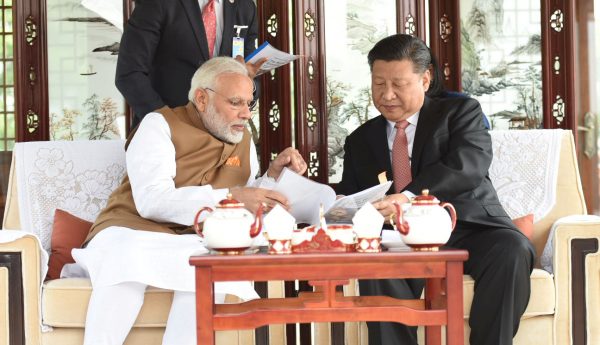The informal meeting was a result of China and India’s coincidence of interests in the international sphere. Xi and Modi, as the leaders of the two largest developing countries, feel that the two countries need to better communicate on some of the long-term strategic issues embedded in their bilateral relations and international affairs.
The rise of China and India is the largest unprecedented change in the world today. The largest source of uncertainty and instability is US President Donald Trump’s foreign policy. Both China and India need a peaceful and stable periphery and a free and open global market to sustain their economic development. Both need to enhance their cooperation against regional instability, terrorism and rising protectionism and anti-globalisation sentiment in the West, particularly Trump’s ‘America first’ doctrine.
As the world’s largest emerging economies, China and India feel that they should explore new ways to live in harmony instead of dragging themselves into geopolitical competition and confrontation as some Western countries have wished. Both China and India drew some lessons from the Doklam standoff last summer, which set bilateral relations at a low ebb.
Modi is eager to look to bilateral mechanisms mainly because of India’s upcoming general election in 2019. Domestically, Modi’s foreign policy approach is being challenged heavily by the opposition party. There has been hot debate on India’s foreign policy in recent months, at the core of which is its China policy.
Modi’s visit to China shows that Modi’s government has realised the failure of the view that pressure and strategic blackmail could make China yield to India on certain issues, such as the Nuclear Suppliers Group, Masood Azhar, and CPEC. China–India relations are a complex mix of competition and cooperation. But over the past several years, India has put too much emphasis on competition and confrontation, while China saw India not as a major strategic threat but a potential development partner.
The United States places high importance on the role of India in its so-called Indo-Pacific strategy aimed at containing China. India had thought it might improve its international status and receive financial support from the United States and Japan in return for acting as a counterbalance against China and its Belt and Road Initiative (BRI) through the Indo-Pacific strategy and the ‘Quad’ grouping.
But the United States is unlikely to respect India’s national interest in its Indo-Pacific strategy. For the United States, the Indo-Pacific extends from the west coast of India to the west coast of America, and does not include the whole of the Indian Ocean. And the Trump administration’s policies on Iran, Afghanistan, trade and climate change are all harmful to India’s development circumstances. If there is a conflict between China and India, India would have to face the pressure from China alone, as the Doklam standoff showed.
India also cannot get enough financial support and investment from the United States and Japan to develop its infrastructure, while the advancement of the BRI in the past several years shows that China has both the willingness and capability India needs. The United States and Japan both play a double game towards China and India. It is interesting that Japan put forward the Partnership for Quality Infrastructure and the Asia–Africa Growth Corridor in words with India while also being eager to cooperate with China on the BRI. Even on the China–Pakistan Economic Corridor, which is the main bone of contention between China and India, the Japanese ambassador to Pakistan has said that Japan may be open to helping further the project.
Xi and Modi found a lot of common ground, including on bilateral, regional and global issues. Both countries’ press releases after the meeting revealed agreements to cooperate on the Bangladesh–China–India–Myanmar Economic Corridor and in other countries such as Afghanistan. And it may even be possible that India will participate in the BRI after the general election in 2019.
But one informal summit cannot completely transform bilateral relations. India’s adjustment of policy towards China is a tactical one, not a strategic one. India wants to get better development opportunities and to realise some domestic political goals with this shift. As former Indian foreign secretary Shyam Saran noted after the summit, ‘the only effective instrument for managing India–China relations will be a significant, sustained and rapid development of India’s economic and security capabilities, thus narrowing the power gap between the two Asian giants’.
The 1962 conflict created a deep trust deficit between China and India. Today, both countries’ top leaders play the main role in the management of bilateral relations. In the future, different levels of people-to-people exchanges will be key to improving the relationship. But it is very difficult to change the mindset of India’s strategic elites. There remains a long road ahead for China and India.
Zongyi Liu is a Senior Fellow at the Shanghai Institutes for International Studies, a visiting fellow of the Chongyang Institute for Financial Studies, Renmin University of China and a distinguished fellow of the Yunnan Academy of Southeast Asia and South Asia Studies.


If India is an emerging economic and military power, why would they need financial support and investment from the United States and Japan to develop its infrastructure considering the fact that the USA is a falling economic power and is going broke because of all the tax cuts and subsidies that it gives to the corporations and wealthy class? You would think that India would have cash reserves like China has to do its own investments.